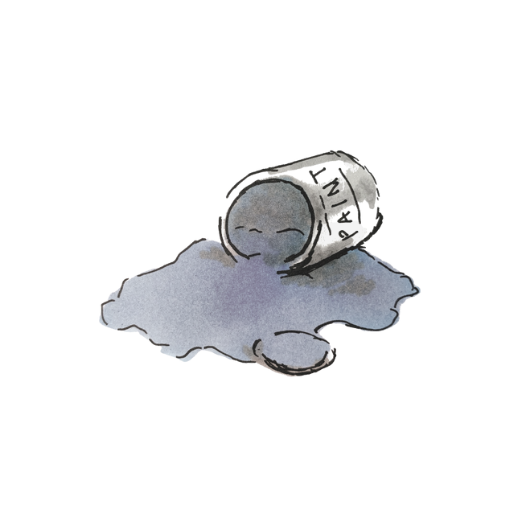
It’s been a hot minute since I built my DIY bay window seat with built in storage, but I have finally got around to adding a bespoke cushion and my goodness, what a difference it makes. This is the perfect finishing touch to any window seat and the blog below can be adapted to your measurements.

What you’ll need for your window seat cushion
Foam cushion

For this project, I chose to have a foam cushion cut to size and delivered. I didn’t want to invest in special tools to cut foam or deal with the waste, so this was my preferred option. You can order a bespoke, made to measure cushion here.
I chose high density (firm) foam, which was recommended for this type of project. As you can probably guess, the cushion feels firm, but still comfy with batting wrapped around it. If you wanted something squishier, then medium would probably be the right choice.
Cushion cover
I made my window seat cushion cover. I am a beginner when it comes to sewing, in fact, this was my first project using my new sewing machine (which has been a dream to use and I really recommend it).

My fabric is from Just Fabrics (who I worked with on this collaboration and was therefore paid to produce the cushion cover, but not this blog). I used the JF Vintage Velvet FR Fabric in Seaglass. It’s thick and sturdy and perfect for an upholstery project. It’s also very beautiful and looks expensive!

Here’s what you’ll need:
- Sewing machine
- Upholstery fabric
- Good quality cotton (I used Gutermann)
- Piping cord (if you want to add piping)
- Zip
- Good quality pins
How to make the window seat cushion cover
I made my window seat cushion cover with piping, but you can skip this step to make the project easier.
Making the piping

This is not an essential element, but gives the cushion a professional finish. You can skip the piping to make the project that bit easier.
To make the piping, you need to cut a strip of the upholstery fabric 4cm (seam allowance x 2) wide + an allowance for the cord. The easy way to do this is simply wrap the cord in the fabric and mark where to cut. Lots of people told me I needed to cut the material on the bias, but I think this is more important for other fabrics – it certainly didn’t make a difference to the finish of my project, but you may wish to do this for yours.
It doesn’t matter if you don’t have one continuous piece as you won’t notice the seams once joined together. Leave an extra piece of cord sticking out to help with joining piping together.

Cut to material for the panels
You will need a top and bottom panel which are identical. A long panel for the front and two sides. The back panel is a bit more complicated due to the zip, so I’ll deal with that one separately.

Add a seam allowance of 2cm when cutting your panels. This means you add a border of 2cm around the whole edge of your panels. This is where you’ll sew them together.
Also keep in mind that if your cushion has been wrapped in batting, it’ll be bigger. I would therefore suggest adding 0.5 to 1cm to the length, depth and width of your cushion to account for the batting and avoid your cushion cover being too tight (which mine was by the way – I didn’t make an allowance!)
It’s a good idea to pin your panels in place onto the cushion before sewing anything to check it all fits as expected.
I used a pencil to draw the seams onto the inside of each panel. This makes it easier to follow when sewing them together.

Zip panel

You don’t have to add a zip. There are easier options, for example using velcro. You could also sew the back panel up once the insert is in by hand, but this means you can’t remove the cover to wash.
The zip panel wasn’t too tricky. You need to cut two strips of fabric (as opposed to one like we did for the front panel). The seam allowance is required around each of the two pieces. So if your strip needs to be 8cm wide, you’ll need two strips of 8cm each. That’s 8cm / 2 = 4cm + 2cm seam allowance all around = 8cm. See the diagram below.
I found it easiest to ‘tack’ the two panels together using a contrasting thread (makes it easier to identify and remove later). Then fold out the seams and tack the zip into place.


Using the zipper foot on the sewing machine, sew your zip into place and remove the thread for tacking.

For a tidy finish, add a small panel of fabric to each end of the zip, before attaching piping, as illustrated below.

Attach the piping
If you have decided to use piping, this needs to be attached along the top and bottom seams of the front, 2 x side and zip panels. You can skip this step remember. Adding piping means a lot of layers of fabric and sewing through them all can be tricky. However attaching the piping itself is easy as you just line the edges up and use the zipper foot to sew along the seam line as below. The cord can be sewn in close using the zipper foot.

At this point, it’s a good idea to double check everything still fits together as expected by pinning all the pieces to your foam window seat cushion insert.
Attach the top and bottom panels
Next the top and bottom panels need to be attached along the seam line. I did everything inside out and then turned it in the right way. I did find this tricky, as there is a lot of material by now, especially if you’ve used piping. Using a needle for quilting helps (I broke one needle!) also, I find though using the machine manually, by turning the dial to manually move the needle up and down, over the thickest areas was easier.

I’ll be honest, I did have to unpick my panels here! I’d sewn the cushion cover too tight and it was a bad fit as a result. This is why I suggest pinning it first to check everything as you expect it to be. But if it is your first time having a go, like it was for me, be ready for a bit of trial and error. It doesn’t matter if you need to unpick bits – mistakes are how we learn after all.
Joining panels together
Panels are sewn together along the seam allowance as usual, but to keep things neat, flatten out your seams as illustrated below.

Joining piping together
To join piping together simply tuck the end of one piece into the fabric of the piece you are joining it to and snip away the excess cord. Fold the fabric back down and sew along the seam line.



And that’s pretty much it folks. I did find that hand stitching some of the corners together was easier, especially as the material had so many layers by then. The window seat really does elevate the room though and I’m so glad we put it in.



1 Comment